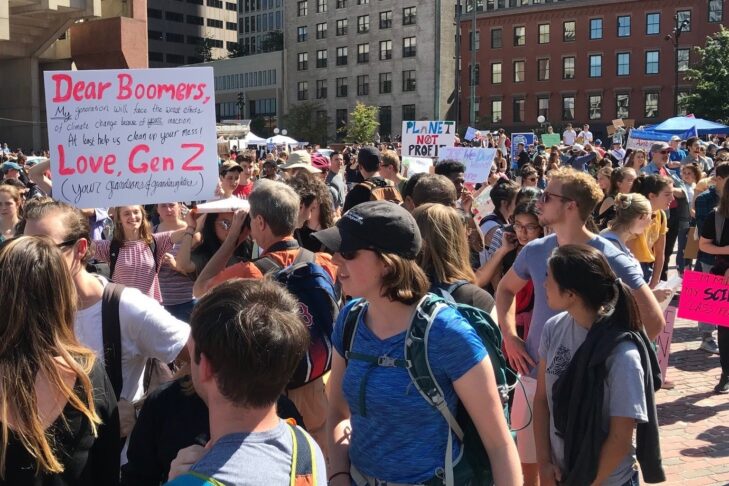Moses’s final message from God: “This day…I have set before you life and death, blessings and curses. Now choose life, so that you and your children may live.” For millennia we have reflected on what it means to choose life; realizing that it is not always our life we’re choosing—our choices are more about our children and theirs; our communities, and our world.
What does it mean to choose life for the Earth? In recent years, I’m privileged to ask this question to classrooms of talented young people, and learned that when given the space to creatively engage this question, informed by science and their hearts, good choices come to light. These students are “nerds for the Earth,” not only learning but seeing what others haven’t yet seen; many then choose life with career paths toward making our world a better place.
Love for Earth is universal. A remarkable cross-section of America gathered for the first Earth Day in 1970, in retrospect a holy day of teshuva when we first asked: Will we fix the messes we’ve made of this world? We then chose life with profound actions to remove poisons from our air and water. Today, addressing climate, our mission is again clear: to repair the Earth by transitioning from fossil fuel use quickly, with environmental justice by helping those most impacted by the worsening plagues of fire, sea level rise and extreme weather.
To choose life for our Earth, we must learn. We need courage to act, but also collective wisdom for our choices to result in a true solution. Our wisdom is improving: Most of us have learned that climate change is a real problem and was caused by our choices to burn fossil fuels. What many of us haven’t learned is that there still is hope—it is possible to stop climate change in time to prevent the worst effects; it’s not too expensive and makes our lives better. But let’s learn the specifics: how our home heat, travel and food must change.
To choose life for our Earth, we must act together. The true question about hope is not can we, but will we? Like the first Earth Day, we can come together, but not by linking climate action to a political or age group. A good Earth is for all of us; let’s share the joy of healing it from climate change.
As 16-year-old Greta Thunberg taught us: Climate education builds conviction to unite behind the science. When millions joined her Friday strikes, world leaders listened to them, and many young people she inspired began to find their own paths as nerds for the Earth. She and they in turn inspire me to keep doing, keep teaching, keep learning—frequently from them.
A lovely day, in a beautiful place, especially with people we love, is a holy place that will live on in our hearts. But so many are now being driven from their holy places by plagues brought by climate change, and the profound moments we experience today in our holy places might not be there in years to come—unless we choose to learn, act and help others. Choosing life to repair the Earth is a choice we have, in service for all who want to learn, all who need our help and all that will follow us.
Harvey Michaels enjoys being an MIT faculty member, teaching and learning about energy and climate innovation while investigating climate plan initiatives for cities, the state and federal government. He also engages in environmental justice advocacy, participating in JCAN, GBIO and synagogue initiatives, among others. Before returning to MIT in 2008, Harvey led an energy efficiency company for many years.
This post has been contributed by a third party. The opinions, facts and any media content are presented solely by the author, and JewishBoston assumes no responsibility for them. Want to add your voice to the conversation? Publish your own post here. MORE


